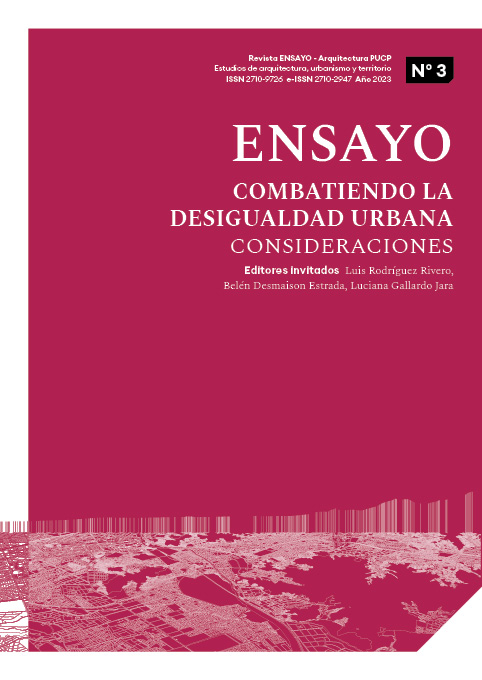Los barrios de Arequipa: Crónica de una ciudad fragmentada
DOI:
https://doi.org/10.18800/ensayo.202303.004Palabras clave:
Fragmentación barrial, Riesgo y desastre, Desarrollo urbano, Resiliencia, Costuras urbanasResumen
El presente artículo busca entender las características de la fragmentación física y social de la ciudad de Arequipa mediante la exploración de la evolución histórica de sus barrios, los cuales son elementos fundamentales de la ciudad, tanto en su conformación físico-espacial como socio-cultural. El análisis de la estructura de los barrios, de su conformación y transformación puede aportar en el entendimiento de la dinámica y características de la ciudad. Para tal fin, se explora la evolución de la ciudad prehispánica, colonial y republicana desde la generación de barrios, y las implicancias que esta tuvo en las divisiones sociales en Arequipa. A continuación, se discute el papel de la planificación urbana a partir de la segunda mitad del siglo XX y cómo, en muchas ocasiones, esta ha subrayado el desmembramiento, la fragmentación y la marginalidad en vez de ser un agente de articulación. Finalmente, se propone una alternativa de renovación urbana que fomenta la integración social, urbana y ambiental en la periferia de Arequipa, mediante el desarrollo de una red de centralidades barriales.
Descargas
Descargas
Publicado
Cómo citar
Número
Sección
Licencia

Esta obra está bajo una licencia internacional Creative Commons Atribución-NoComercial-CompartirIgual 4.0.





